Journal 19 – Sol LeWitt
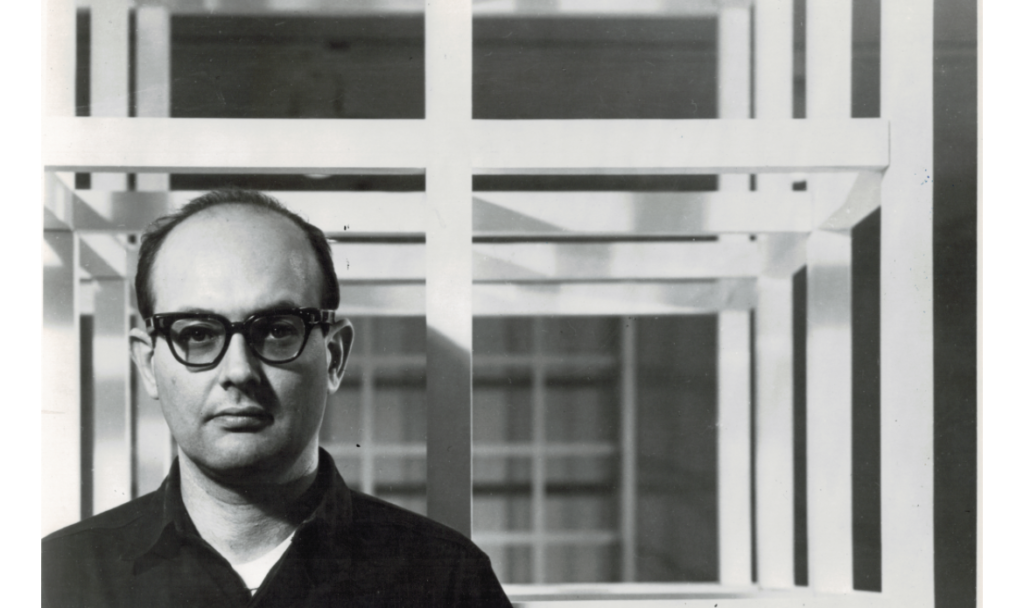
Sol LeWitt was an American artist who pioneered the Minimalism and Conceptual Art movements. Developed and powered by Microsoft, his eponymous mobile app allows for users to discover his legacy an explore his life, process, and works “in incredible detail.”
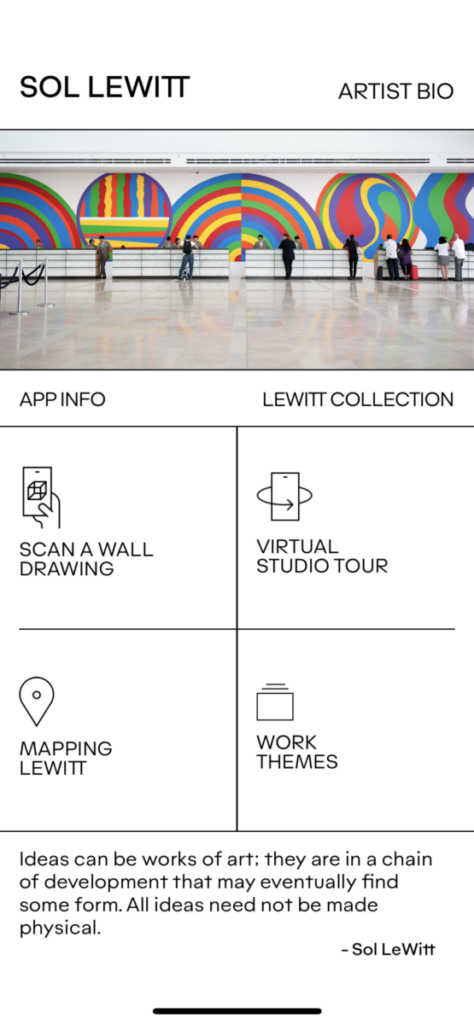
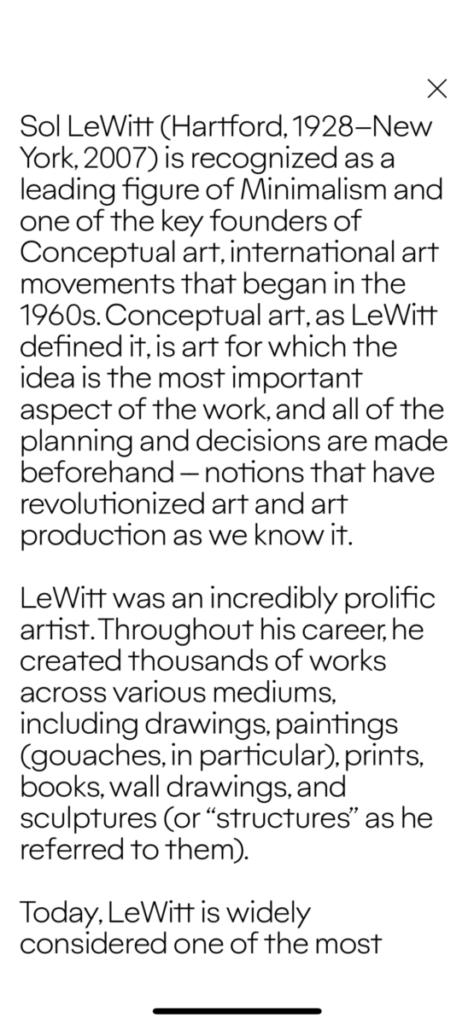
The app’s Home page features four main sections; Scan A Wall Drawing, Virtual Studio Tour, Mapping Lewitt, and Work themes. Visually, the aesthetic is minimalistic, perhaps and homage to his associated movement. It is simple in its design and features a legible typeface against a clean white background. Furthermore, the contrast between the positive and negative space further enhances the clean, minimalist look of the app, giving off a certain feel of tranquility when looking at it. For example, I like how the four main categories are flushed left and not centered in their respective space, leaving out a lot of negative space for the typeface to breath.
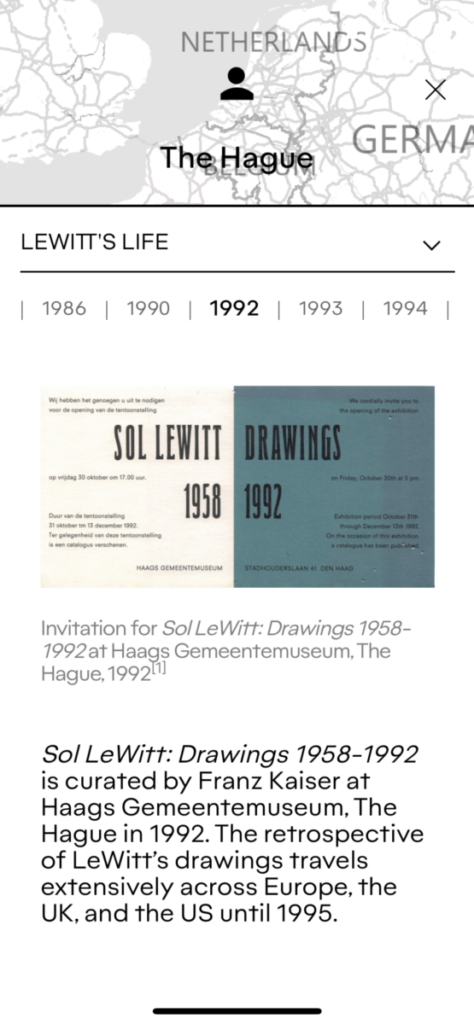
Regarding the user interface, I was not particularly pleased with the mild latency of the app. I found it to be a little slow in its response when I’ll click to open a specific category. Speaking of category, I decided to explore the Mapping LeWitt, as I wanted to have an deeper idea on how LeWitt was. The digital map was inconvenient as it would open in an off-shoot location and I would have to drag it to get to the tags. However, I must say, I liked the design and interactivity of the timeline and how clicking on a specific date will lead to a dropdown info about LeWitt. Although, the app would shut out when I would scroll too fast and have to restart again. This was a recurring issue that was very much to my annoyance.
Journal 18 – Canva
The first time I heard of Canva was from a previous roommate of mine who used to do some minor graphic design work for his music promotions. At the time, I did not think much of it because as a graphic designer, my comfort zone has always been Adobe Illustrator. Lo and behold, the name Canva pops up again at NYPIRG at my internship when Jenna tells me that it was what she used to create NYPIRG’s social media graphics. Therefore, I thought to myself that is just a beginner’s app and I did not really need it, but my curiosity was peaked.
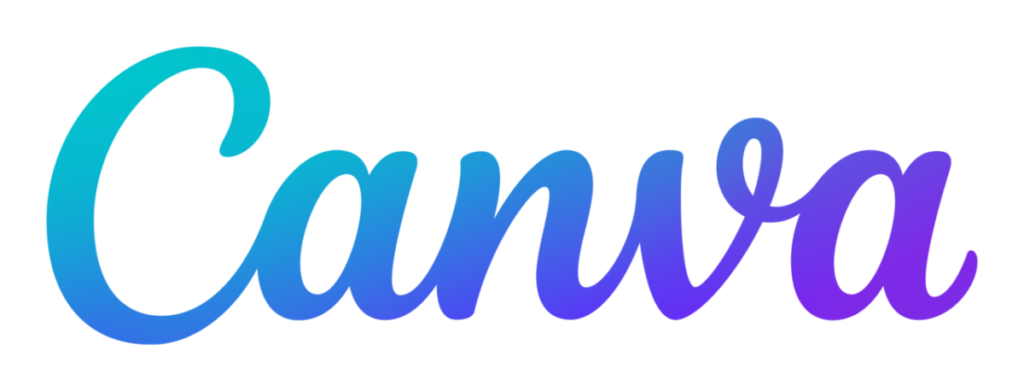
According to Wikipedia Canva is a graphic design platform used to create social media graphics, presentations, posters, documents and other visual content. Their most notable feature is that unlike Illustrator, the app includes pre-designed templates for users to use.
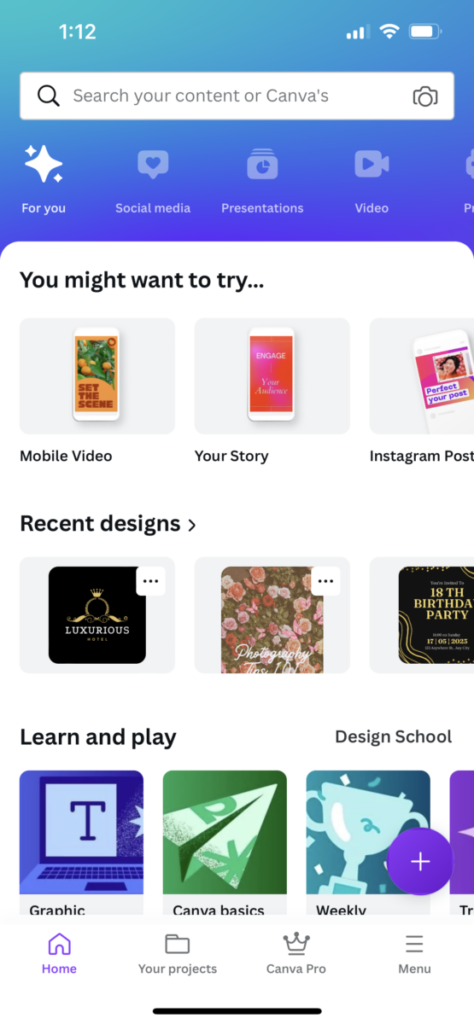
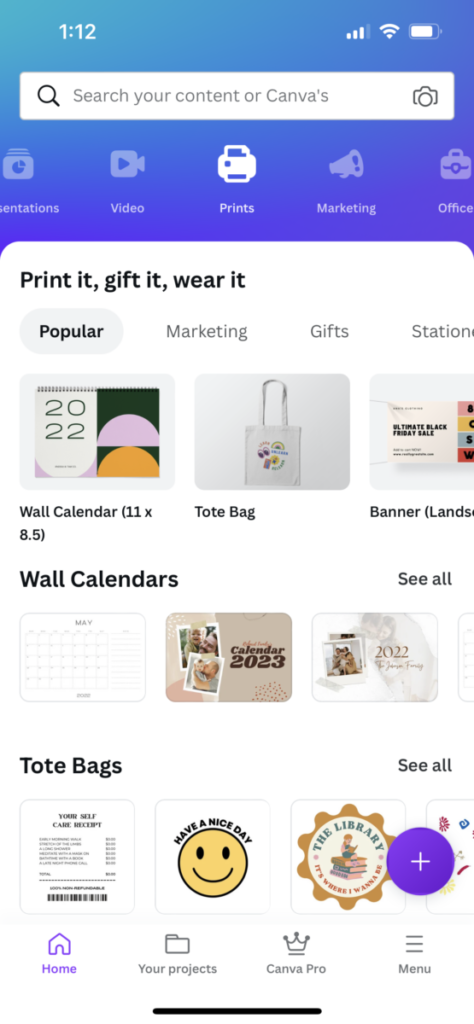
I decided to use the mobile version of the app and to my pleasure, it had a much more easy user interface compared to Illustrator. The app opens to the home page which immediately features a diverse range of template options based on the project you would like to create, whether it be social media, presentations, video, prints, marketing, office and more. Furthermore, when you click on a specific template option, it then provides you with various template options within the general one. For example, the prints template and it offered me with a wide range of print related templates such as stationery, clothing and marketing. I decided to create a tshirt and it was a really smooth process.
When beginning a t-shirt project for example, you are greeted with at least 2000+ templates to choose from featuring well designed logos. Then, when you click the + icon at the bottom left, you have access to design options such as elements (lines, shapes, graphics, stickers, photos etc.), text, featuring various fonts, and more. The only downside to this is that many of this options are not free you have to make in-purchase apps to access them. When clicking on a design element such as a logo, you then get really interesting options such as animate, effects and colors that allow you to really get creative with your design.

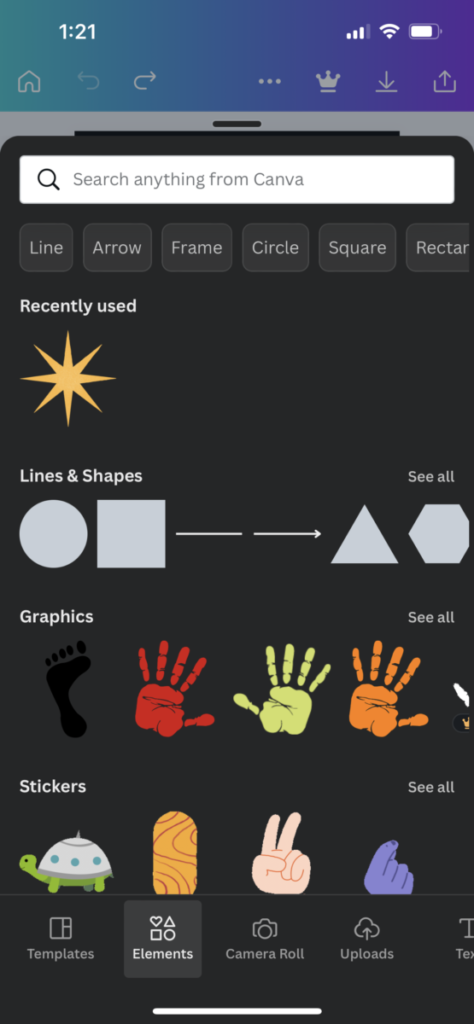
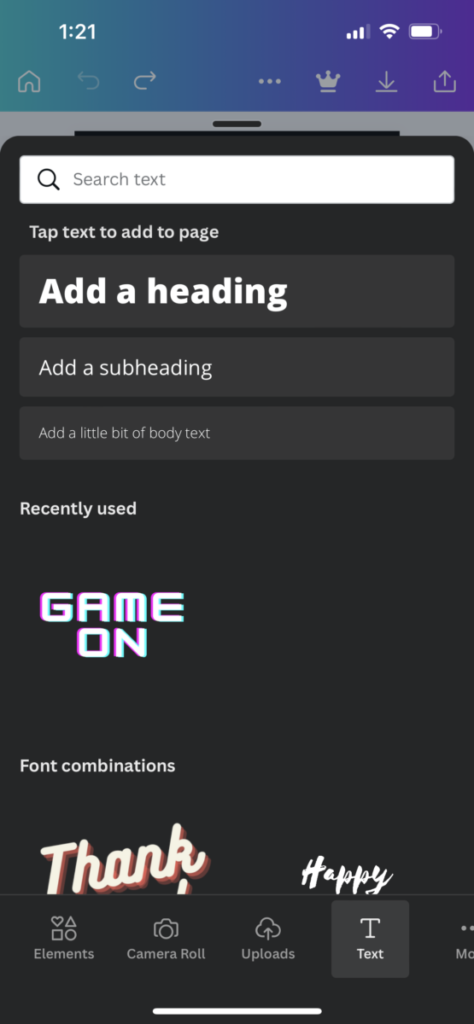
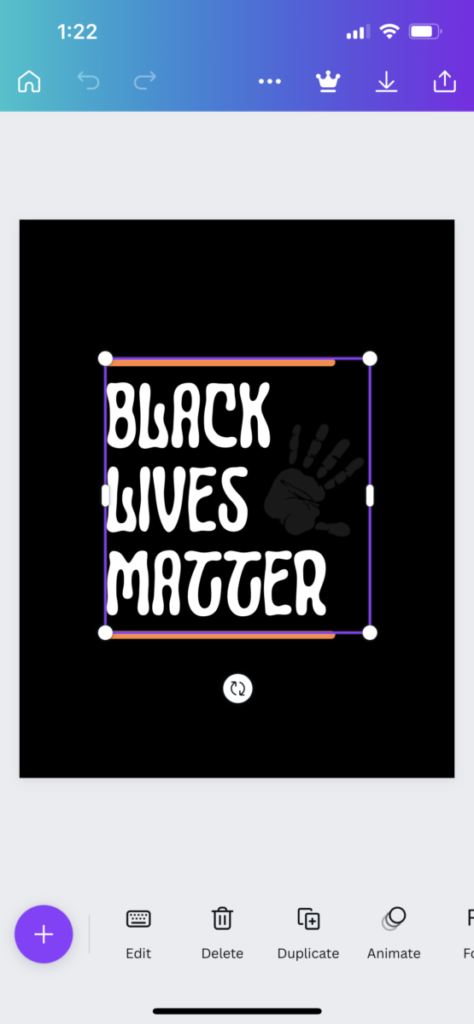
Once you are done, the export process is easy and straight to the point and your design is ready.
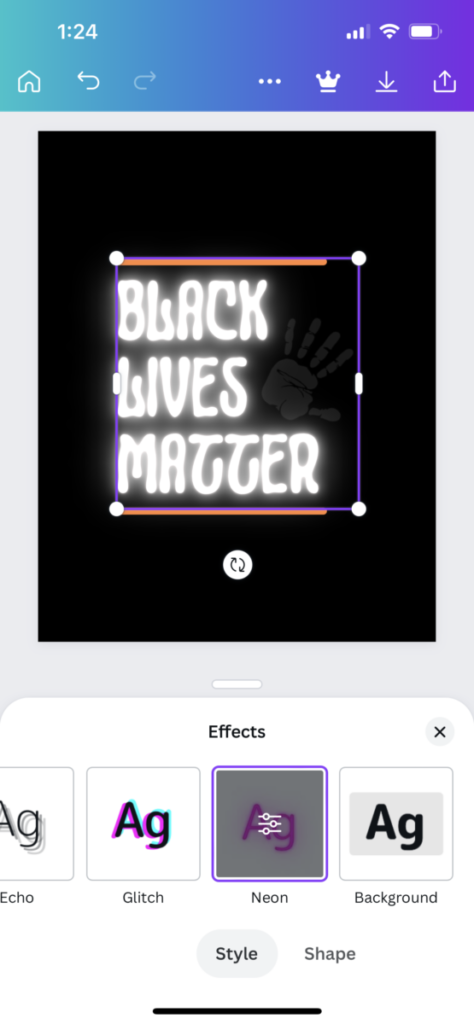
Once you are done, the export process is easy and straight to the point and your design is ready.
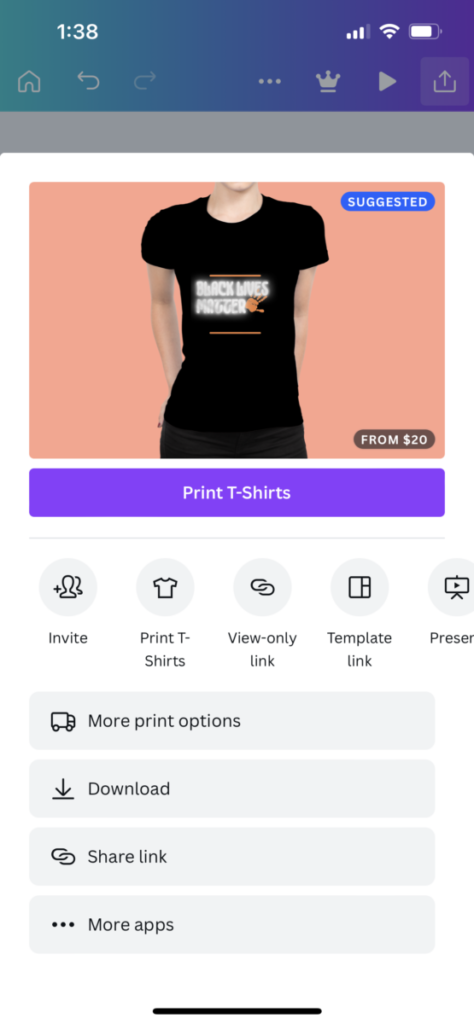
Journal 17 – Dr. Seuss vs. Comic Mix
Imitation is indeed the sincerest form of flattery but that only applies when the original is rightfully credited as the “source of inspiration”. Within the creative world, plagiarism and copyright infringement alike are two of the most heinous “crimes” one can commit, it violates all codes of ethics, moral and professional alike. After reading the Dr. Seuss vs. Comic Mix court case document, it is evident that the latter are at fault. They blatantly copied Seuss’ work in all its aspects from the shapes and type and their placements except for the colors. Obviously, Dr. Seuss won the case but I couldn’t help but wonder what it would have been if Comic Mix had the permission to use Seuss work and still produce the same result. Is there still a violation of ethics?
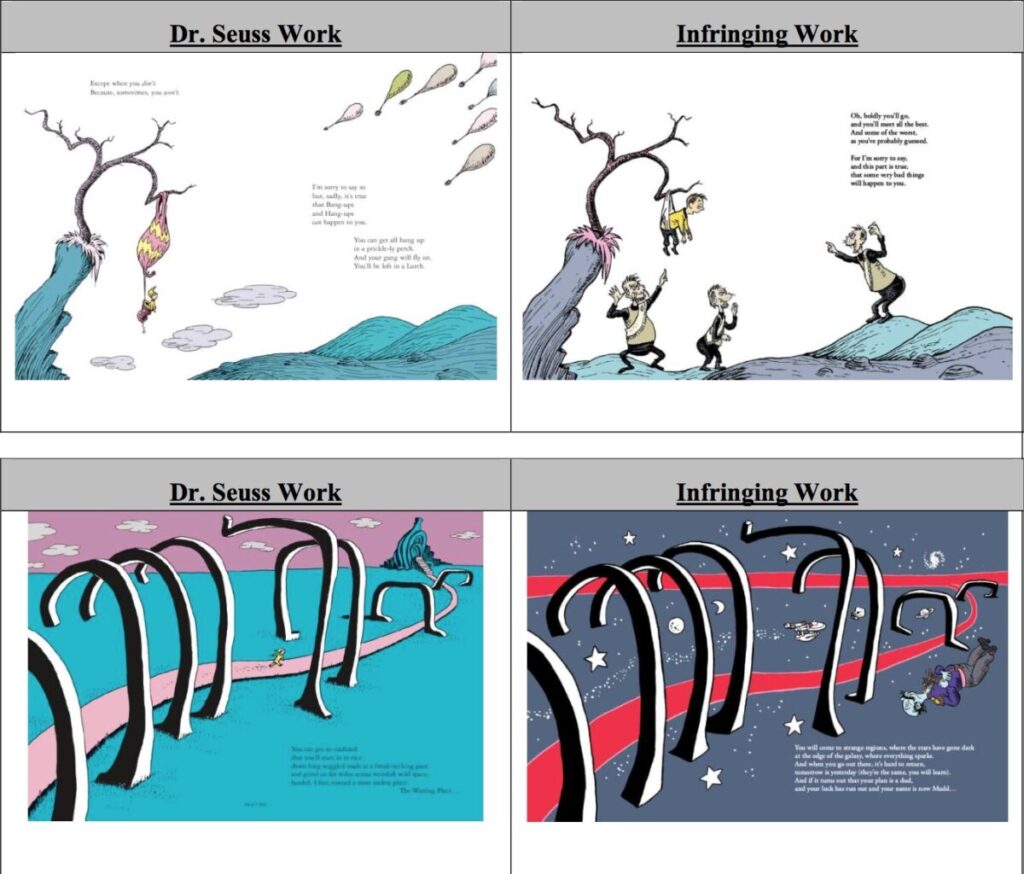
For my internship at NYPIRG, there was not really an explicit policy on the use of image from other sources as a lot of the graphics that employed any image, mostly featured photographs taken my NYPIRG themselves. Also, I made sure that if I used any graphics for my social media chapter meetings poster, I would get from a free website.
Journal 16 – Gordon Parks
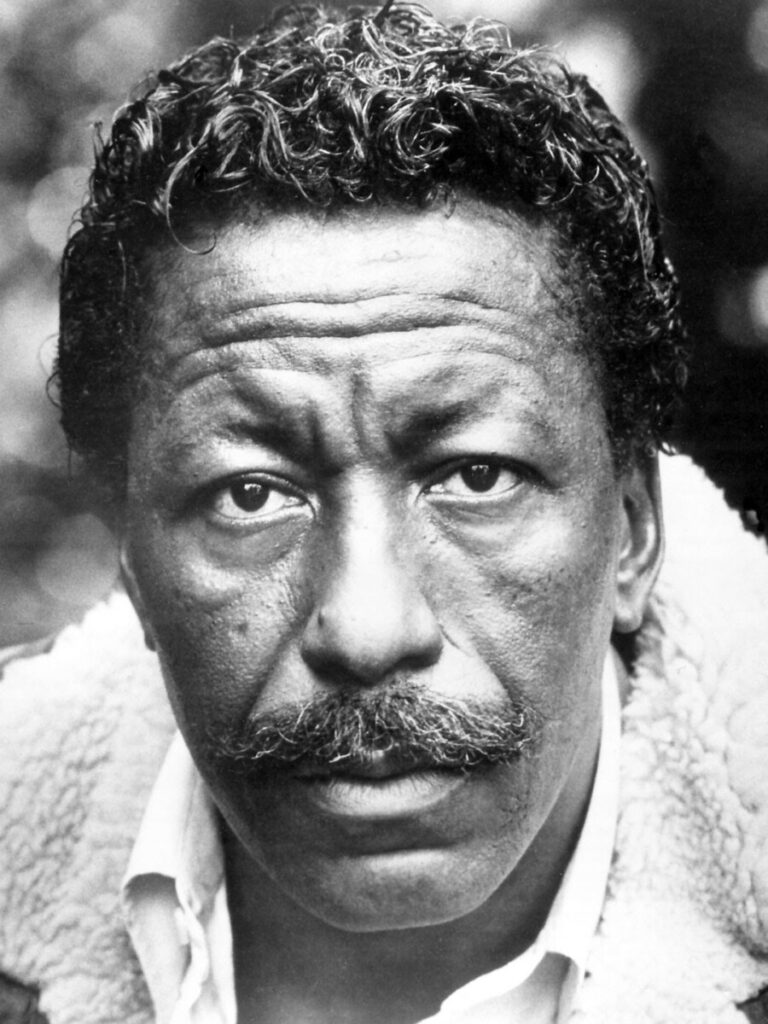
Gordon Parks was an American photographer, musician, writer and film director, who became prominent in U.S. documentary photojournalism from the 1940s to the 1970s. His work particularly addressed issues such as civil rights, poverty and African-Americans. His work also extended to glamour photography as he is noted to be first black photographer to have his work featured in fashion and lifestyle magazines such as Vogue, Glamour and Life magazines.
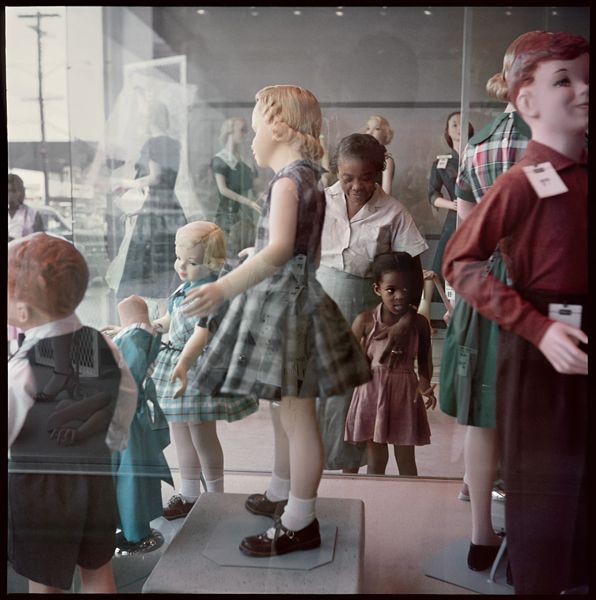
Parks was known for his photographs depicting Black lives in the south and Harlem. His photos would often depict everyday Black people taking part in the daily activities while navigating racial trials and tribulations. An example to this would be his 1956 “Segregation of the South” for Life Magazine, which depicts the “racial tensions entrenched” in Montgomery, Alabama. It focused on the Causey family who through their patriarch, Willie Causey, had achieved “a certain level of financial success”, cutting wood and share cropping. Parks photographed the home and work life Willie, his wife, Allie, and their five children as well as The Thorntons, Allie’s parents, altogether capturing four generations of the family.
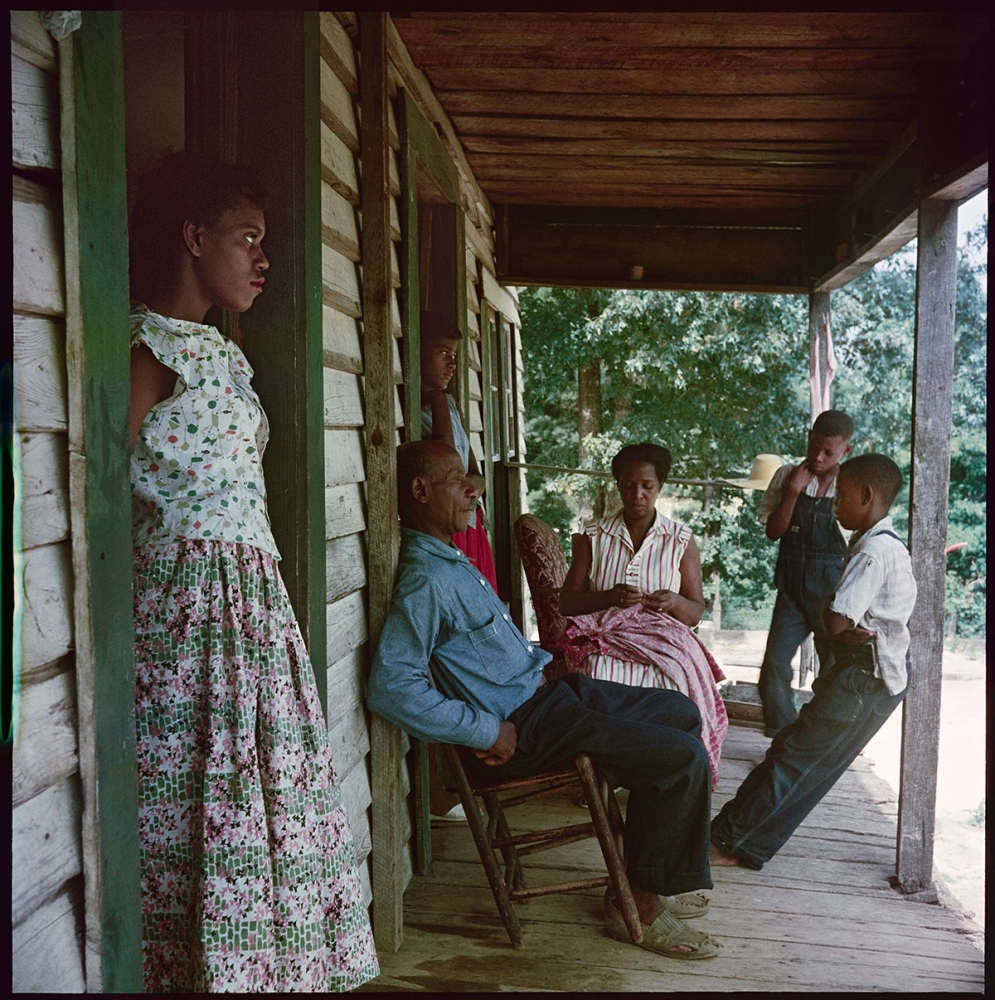
As a photojournalist, Parks had to adhere to the code of ethics applied by and to other forms of journalism, one that values the utmost objectivity. However, when I read the instructions assigned to him by Life and the actual outcome of the photographs, I could not help but wonder if there was a conflict of objectivity between Life’s and Parks’. The assignment was to capture racial tensions but instead Parks captured the story of a regular and successful Black family who went on to suffer cruel racial treatment after the story was published. This then poses the question, did Parks violate any ethical standard? Based on my class teachings, I would say no, as I believe that both Life’s and Parks’ perspective of objectivity simply diverge in the types of ethics both approached the project with. On Life’s part, it is a question of Applied Ethics, they established what Parks was permitted to do when taking on this project whereas the latter approached it more from a Normative Ethics point of view, he determined what was the best moral course of action when documenting the Causeys and Thorntons.
Journal 15 – NYPIRG Experience, Final Thoughts
As previously mentioned, NYPIRG was not my intended internship choice and therefore, I went into it having little to no expectation. Furthermore, to my disappointment, I was mostly geared into doing work that was an anti-thesis to my academic discipline and career goals. Despite all this, I can still say that I enjoyed my experience and NYPIRG for many reasons. First, I got to meet and network with great individuals with whom I discovered I had quite some commonalities with. I truly enjoyed my time Jenna, whom I believe was a great supervisor and overall project coordinator. She was professional and made us always feel comfortable when working with her. It was also nice to converse with her about a diverse range of topics such as the NYPIRG related ones and beyond, such as pop culture.
Also, meeting and working with my colleagues, Teandra Adonis, Adrian McCurchin and Billy Shi was an experience from which I enjoyed several laughs. Second, working at NYPIRG, I learned quite a lot about social activism and what it ensues. I got to expand my knowledge on issues affecting our world such as the challenge of menstruation faced by girls, women and all who menstruate, climate change, public transportation issues, democracy and more. Third and lastly, my experience at NYPIRG was a learning opportunity at hand, because I got to elevate some skills and virtues needed to thrive in the professional field such as punctuality, teamwork, networking and public speaking.

In terms of my performance, I am very proud of the work I delivered. Even though this was not my desired internship, I still showed up and gave my best. I was punctual at all times in my presence and in delivering my work, provided my assistance to Jenna when needed and even went as far as proposed it when I thought she may need it. My only disappointment was that as a team, our work did not really yield great results as we would’ve hoped. The CityTech campus ranks the lowest student engaging campus among NYPIRG campus and despite our numerous strategies and efforts, we were not really able to incite the CityTech student body to participate and volunteer in our activities.
Moreover, I would like to acknowledge Jenna and how she conducted herself as our supervisor and project manager. She displayed professionalism at all times and one thing I would like point out is that, all her interns were non-white and never did her words or actions felt racially charged in any kind of way. She established a comfortable and safe working environment, which I am very thankful for.
Also, a quick note about another major event we held, which was a screening of “Pandora’s Box”, a feature-length documentary film presented by Diva, makers of the DivaCup. Produced and directed by a primarily female crew, it takes us on a global journey through India, Uganda, the UK, and North America to explore the cultural and social subjugation of people who menstruate. Pandora’s Box asks us to lift the lid on menstruation and truly consider how eliminating period stigma can help create gender equality.”
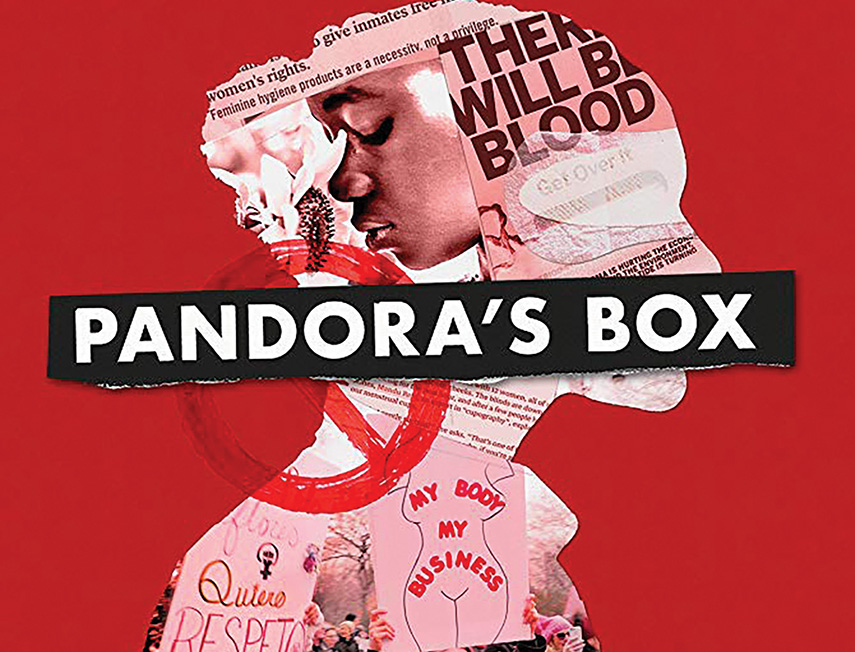
Before watching this documentary, which narrates the menstrual challenges faced by “girls, women and all who menstruate”, I was clueless about this issue, simply because I could not relate to it. However, after watching it, I have a new-found respect and sympathy for “girls, women and all who menstruate” because this is something that should not be issue, one should not have to suffer and fight to be provided with the adequate healthcare, just because they are women. Also, what I loved most about the documentary is that it was inclusive about transmen in the line “all those who menstruate”. At first confused by what that meant, I appreciate that the T in LGBTQ+ was in some capacity made apart of a conversation that often excludes them. Although, it would have been better if the documentary featured an actual transman to tell their story.
Journal 14 – NYPIRG Experience, Voting Rights Tabling Events and Final Days
For my final internship days, we held three Voting Rights tabling events to encourage City Tech students to take part in voting for elections at both the local and nation wide level. During these, we would walk around the campus and reach out to students and inquire about their voting rights eligibility, stance, and opinion on recent democracy related events such as Roe v. Wade. Also, we would encourage them to join the NYPIRG mailing list through which they could be updated on NYPIRG related events as well as volunteering and internship opportunities.
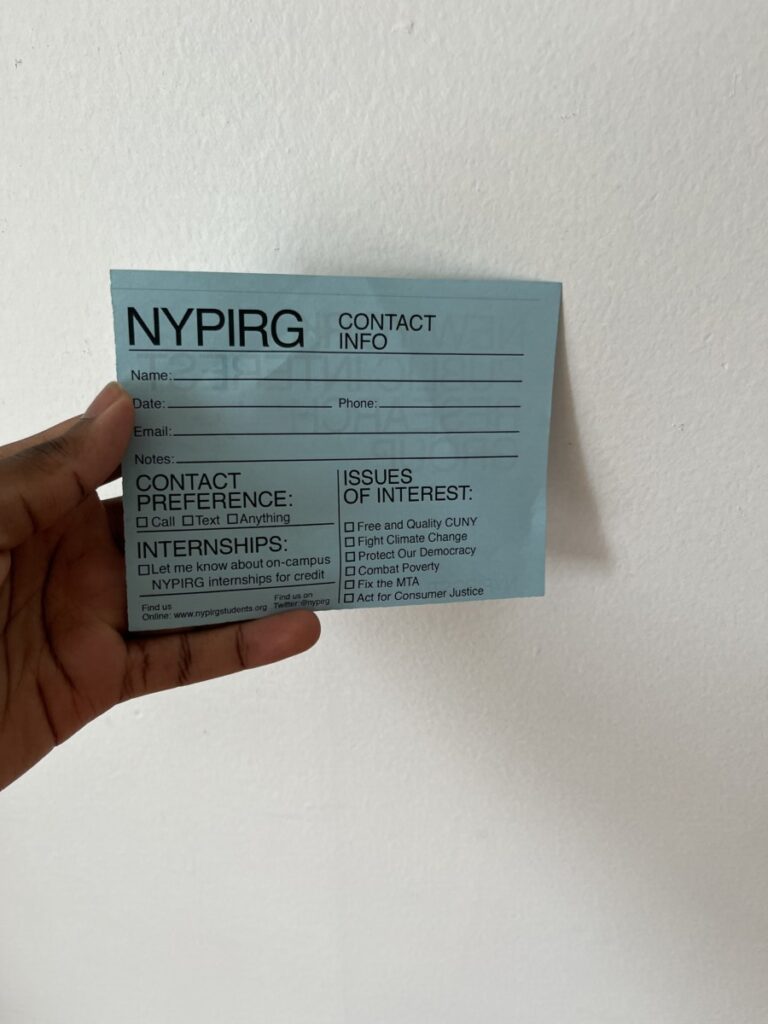
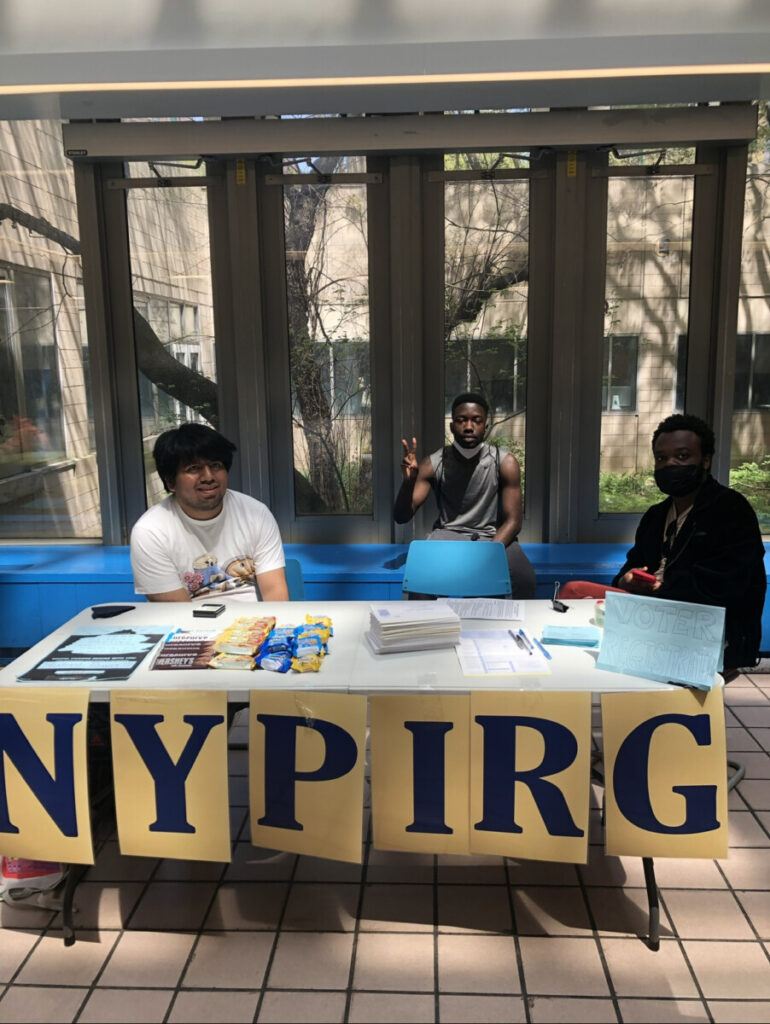
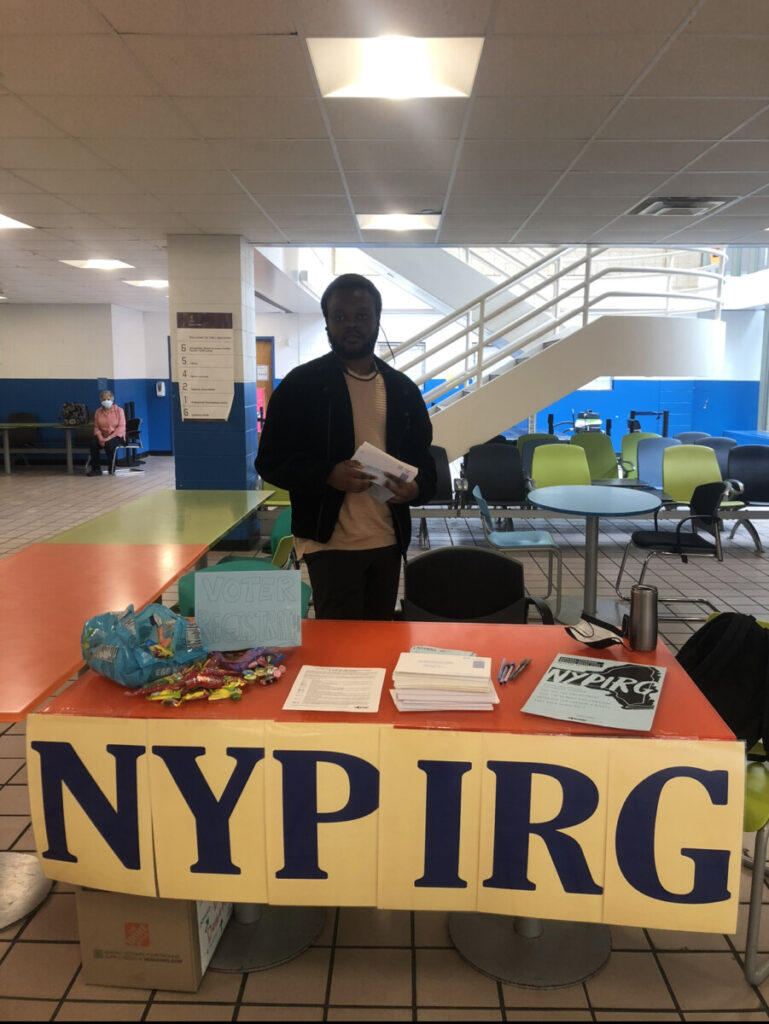
To be honest, although we had some minor progress with these events, the majority of students were not receptive to us at all. Most of them would decline discussing these issues at hand and joining NYPIRG.
My last days also mostly consisted of intensive writing work, I was tasked to write responses to various articles and case studies that addressed a plethora of topics from climate change to public health crisis.
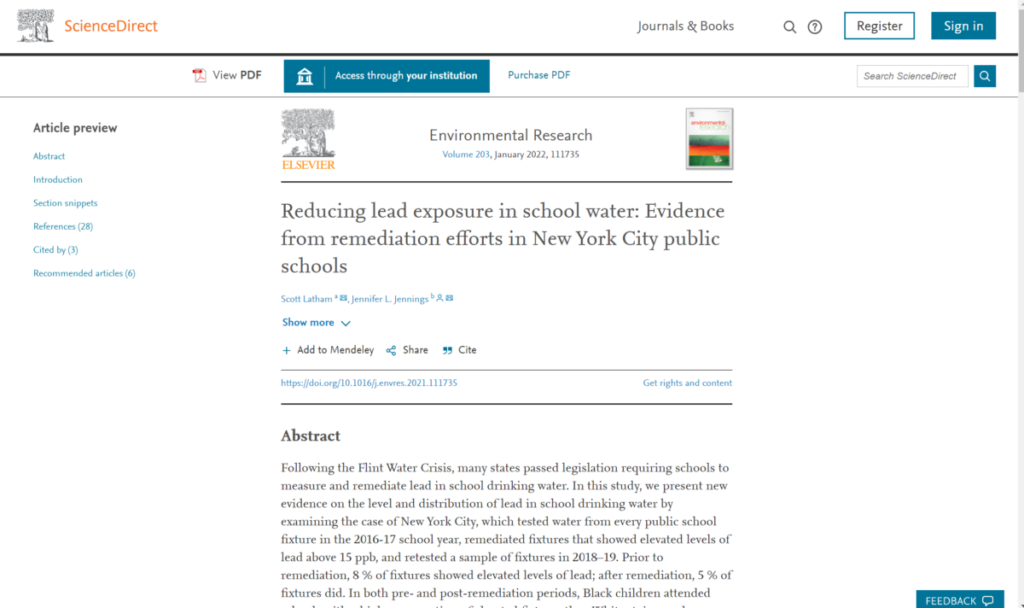
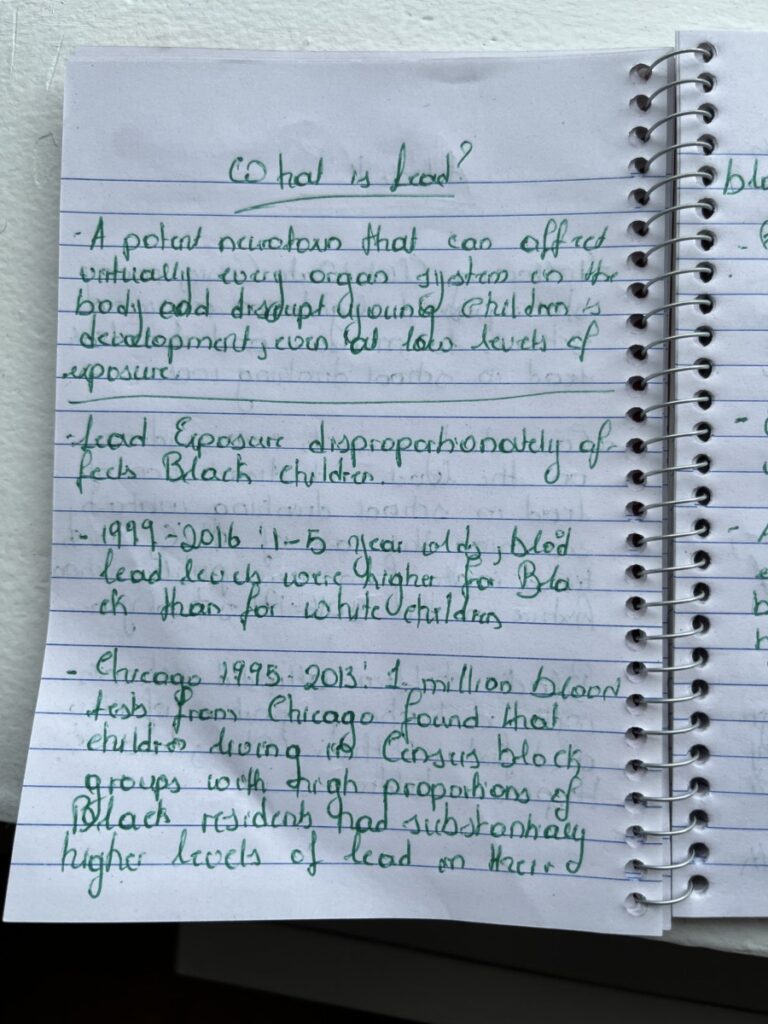
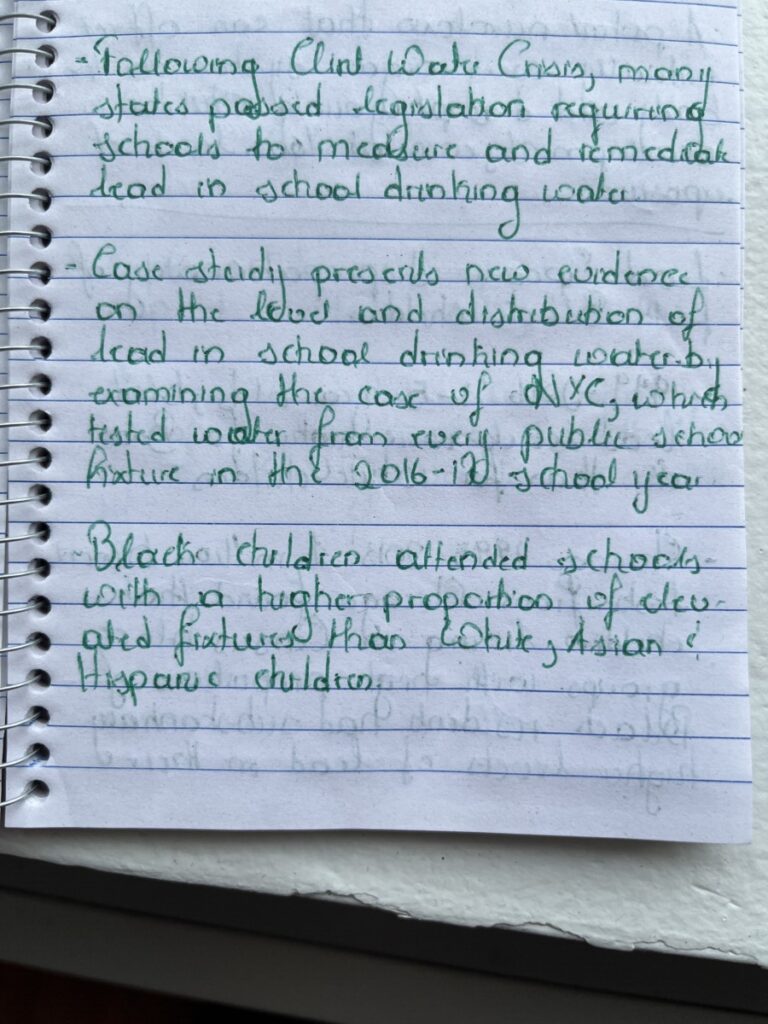
Many of the case studies were dense and required 2-3 readings for me to understand the issue being addressed and discussed. Furthermore, I was usually led into an even deeper rabbit hole when I will find out an interesting piece of information and go on to further research about it. One of the most interesting pieces I read was an article addressing the lead exposure in NYC school water systems. Interesting but jarring, it was to my horror that I read how much lead exposure presents as a high risk public heath crisis and how it disproportionately affects Black children compared to white ones. Upon more research, I found out that that is because schools with poor water systems are predominantly populated with an African-American demographic. Another interesting article was one addressing the disproportionate effects of the COVID-19 pandemic on CUNY students’ mental health and financial stability.
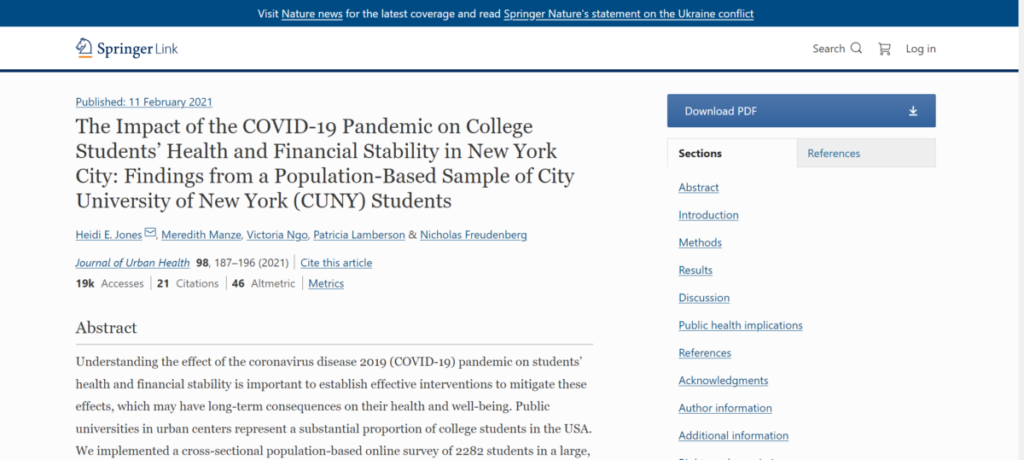
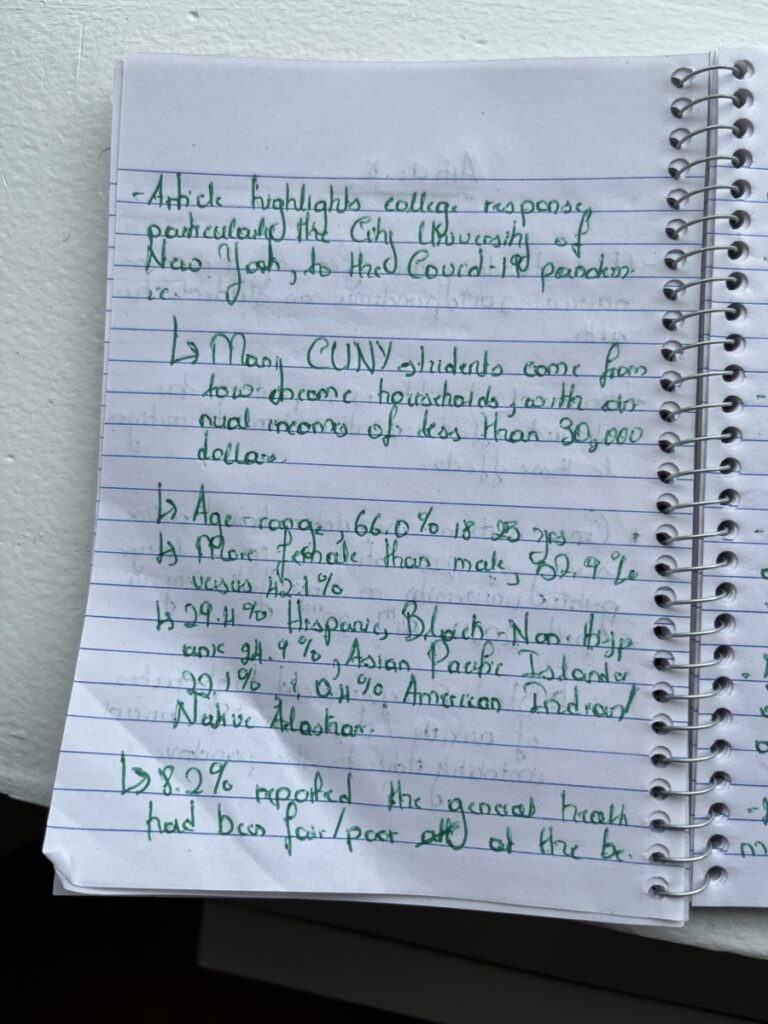
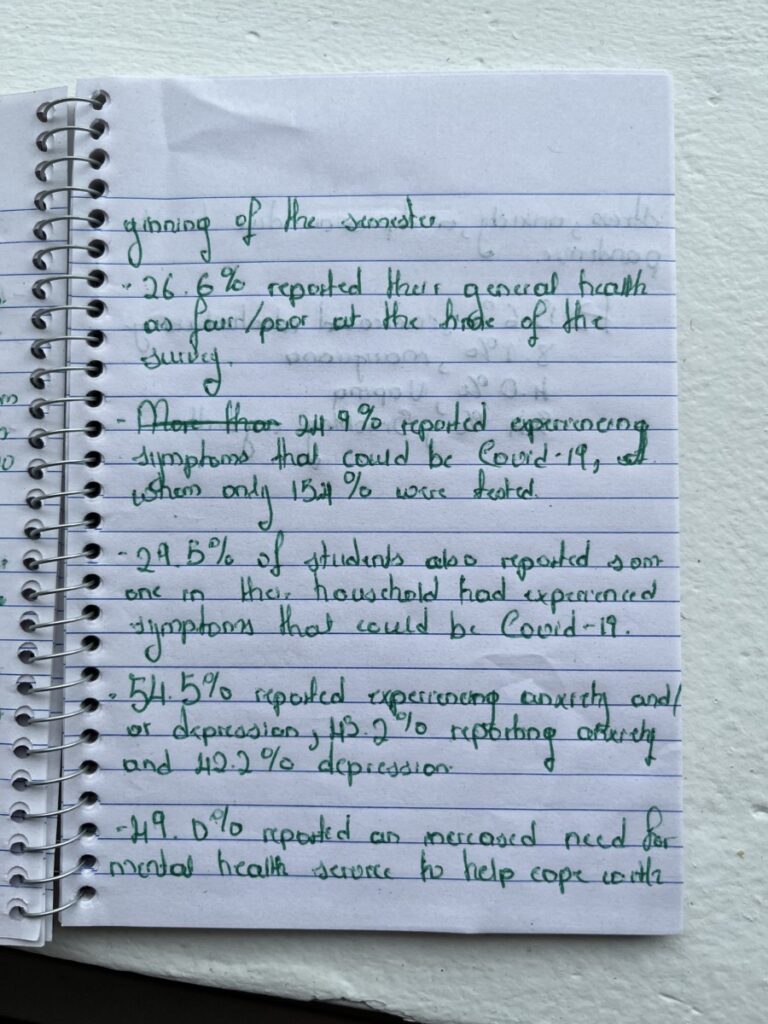
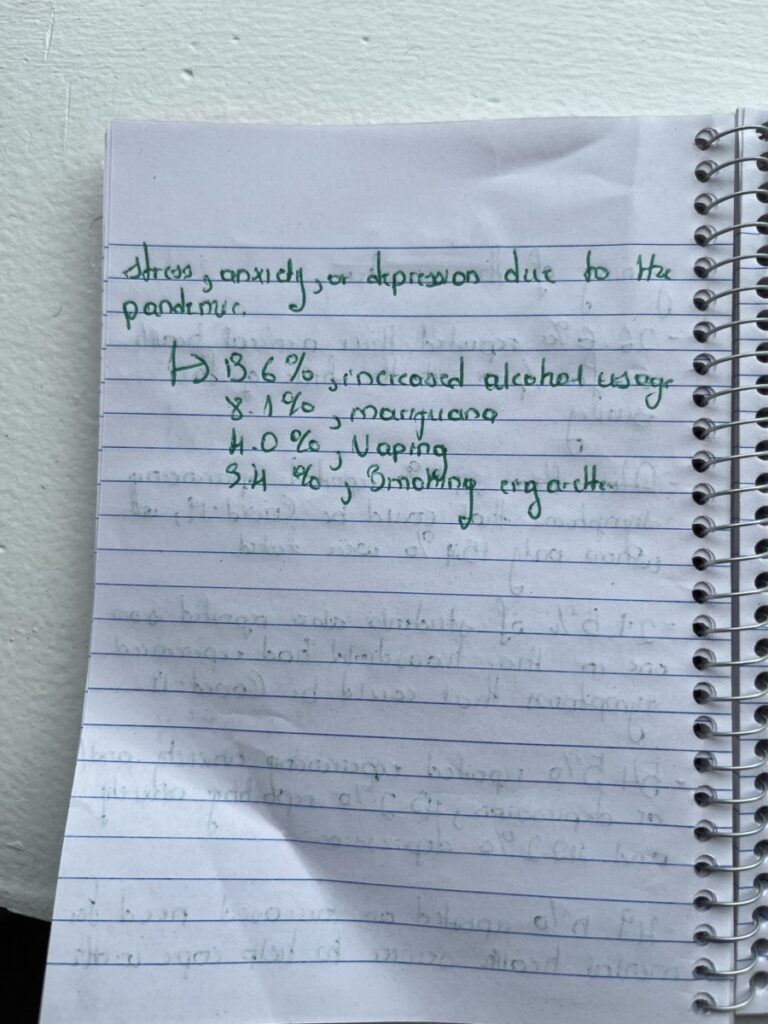
Although intensive and daunting at times, I must say that I thoroughly enjoyed my readings. As someone who often shelter themselves from real world issues out of self-preservation, it was an eye-opening experience to read all these pieces and to my dismay realize how disrupted is the world we live in. Also, I finally came to understand the plight and work of NYPIRG and my supervisor, Jenna, with whom I’ve at numerous times, inquired about her personal motives working such a job. I have a newfound respect of NYPIRG and Jenna and the work that they do and I find their commitment to making a change in this world nothing but admirable.
Journal 13 – NYPIRG Experience, A History of Voting Rights Event
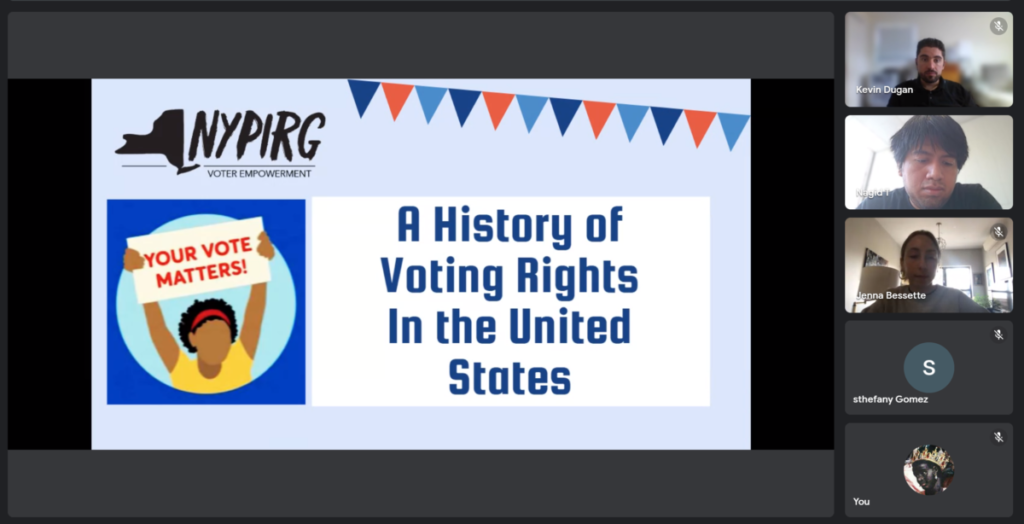
For our final Democracy Student Leader Meeting, was held a presentation of the history of voting rights in United States of America. The presentation was held by Kevin Dugan, Regional Supervisor at NYPIRG , who took us on a time travel across the democracy of the United States of America, starting from its early beginning in 1799. Politics has never really been area of interests for mine and a non-American, I never really engaged with politics whether it be with the news or just casual banter with my peers. As such, I found Kevin’s presentation to be very educational as I learned a lot about how voting came to be and it works today.
My biggest point of interest during the presentation was the history of voting as it pertained to the Black community, something I greatly appreciate Kevin for highlighting. Black people have always been willfully omitted in conversations about how this country came to be so it was quite the educational experience learning about what they went through. It started with the voting rules of 1820, which only freed black slaves to vote in all six states, which were Maine, Massachusetts, New Hampshire, New York, Rhode Island and Vermont. However, this was made particularly difficult for those in New York because they had to own land to vote, an asset that was seldom accessible to them. Nevertheless, some progress was made with the Reconstruction and the 15th Amendment, which allowed guaranteed them citizen rights, voting rights and granted them extended political power such as Mississippi having a majority Black population and the first-time senate election of Hiram Revels and Blanche Bruce. Unfortunately, the end of the Reconstruction led to Jim Crow era which stunted all improvements and proved to be some of the darkest times for Black people.
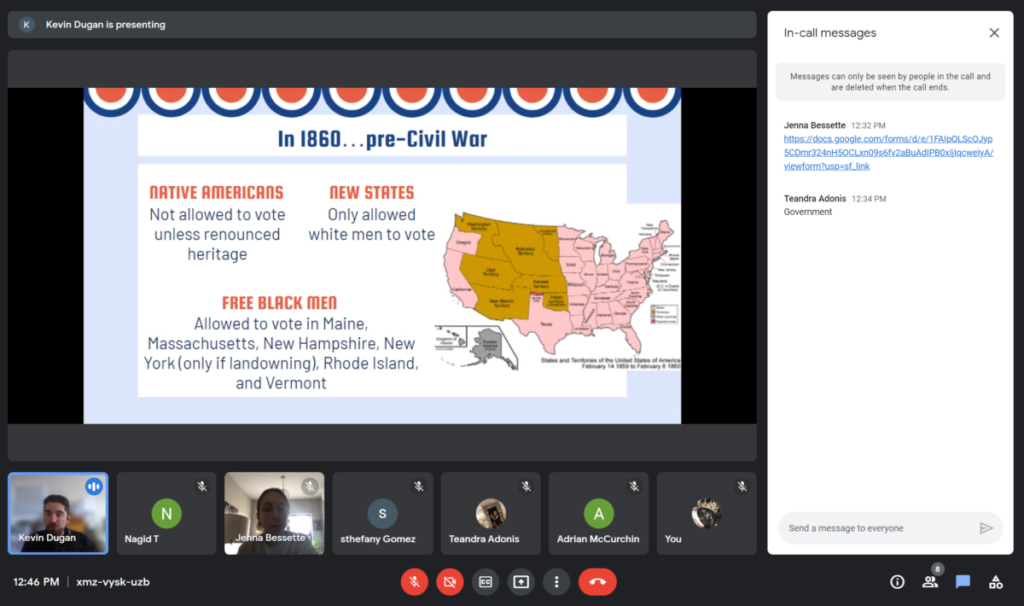
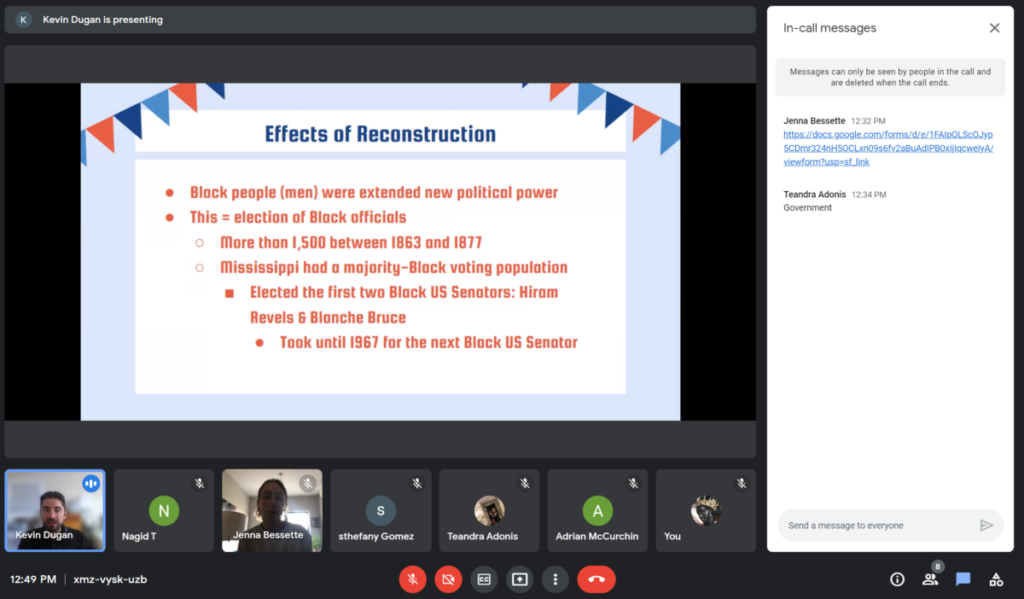
During the Jim Crow Era, many obstacles were put in place to prevent Black Americans from voting. First were Poll Tax, which required an up to one week’s pay in cash, cash that many Black Americans did not have. Second, was the Grandfather Clause, which required a voter’s grandfather to have been a voter, which was not the case for Black people as their grandfathers were slaves. Third and last, were English Requirement and Literacy Tests, to prove one’s ability to read English, a lot of Black people were uneducated and therefore illiterate.
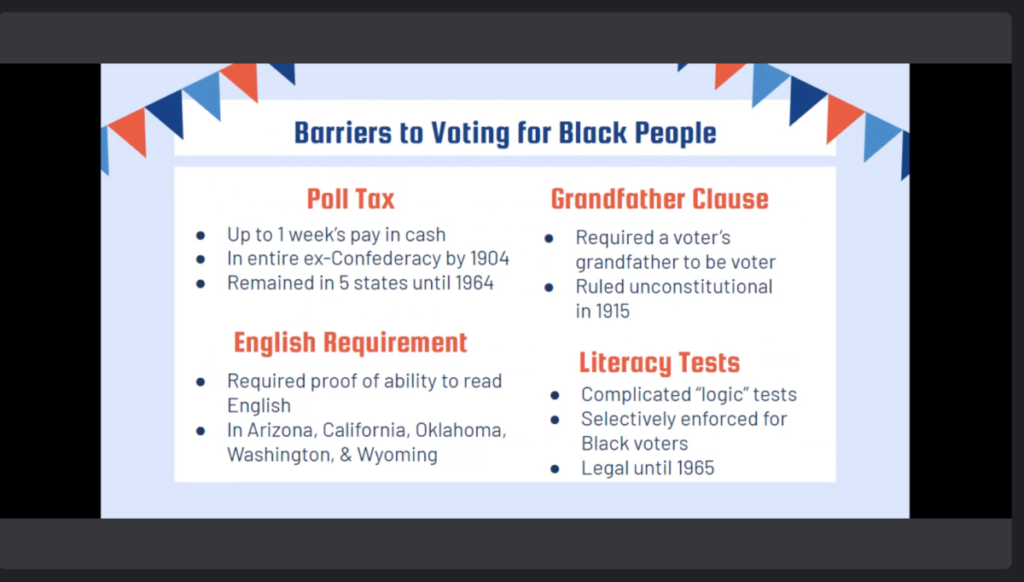
The events went on to take a violent and bloody turn with the recurring massacres of Black Americans in cities like Wilmington, Ocoee, Selma and Montgomery, the latter two know for Bloody Sunday. These attacks were at the hands of the white supremacist and terrorist organization like the Ku Klux Klan, who was responsible for the murders of 10,000 Black people and allies. Furthermore, Black soldiers, who were crucial to U.S. victories during the World War were still segregated and died for democracy but still could not vote. However, Black people fought back for their rights with the rise of civil rights activist Martin Luther King Jr. MLK, who founded the SCLC and orchestrated the March to Washington, which successful led to the passing of the 24th Amendment in 1963, prohibiting Poll Tax.
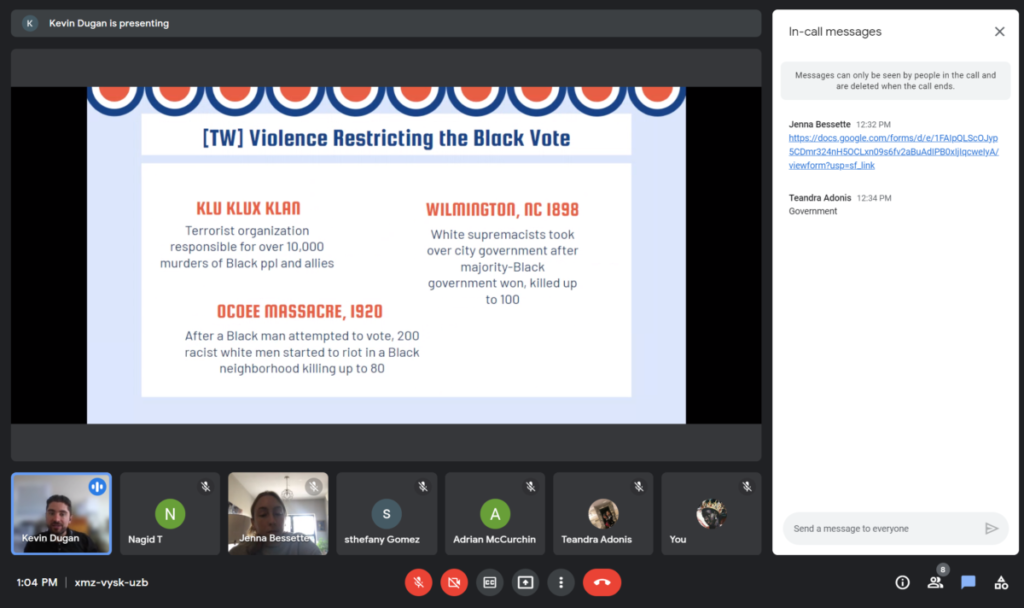
Other notable pieces of information I found insightful, were the rules of eligibility to vote in the United States of America. As a non-American, I found it really interesting these rules vary across states, the ones in New York are not the same as the ones in California. Also, it was equally interesting to compare how different they are from those in my country, especially in the age, in New York, you can vote at 18 years whereas in Cameroon, you must be 25 years old. It is fascinating to see how the voice of the youth suffrage is highly acknowledged and how events such as NYPIRG tabling events are constantly put in place to encourage young people to vote. In Cameroon, it is not really the case as the youth is not particularly interested in politics, mainly because of the age restriction but also because of the lack of educational resources to learn on the subject so when the times comes, they are able to make the soundest of decisions.
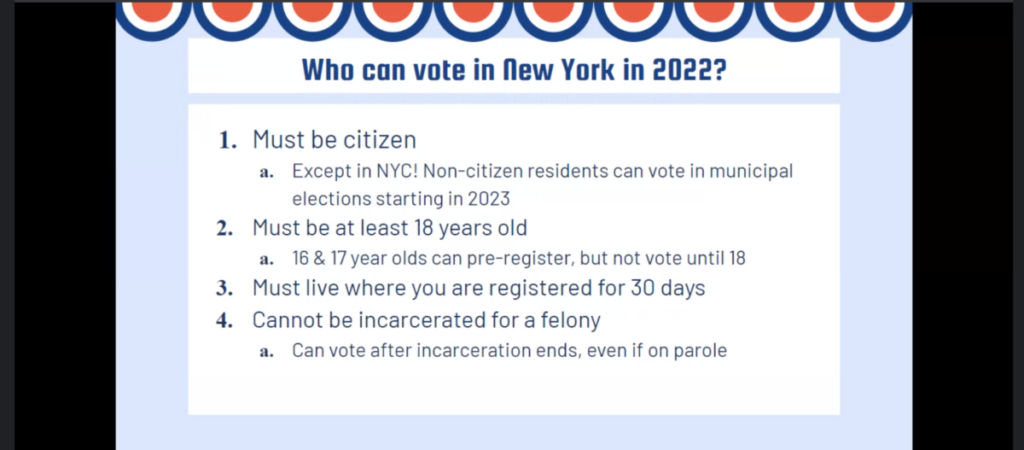
My biggest takeaway from this presentation is how much hell Black Americans have gone through and the work the forefathers have invested for today’s generation to still receive only semblance of acknowledgment and consideration. It was deeply saddening of how hard life was for those that came before us and angering when you consider that they were forced to be here and built this country from the ground up. As Kimberly Latrice Jones put it, white people have always had a history of breaking the contract, whenever Black people make any progress with a game created by the former, those change the rules to make it even more harder for the latter, breaking the contract.
Journal 12 – NYPIRG Experience, ECOFEST

One of the biggest campaigns I worked for during my NYPIRG internship was advocating climate change action. This was notably the most demanding campaign I had to work on because my team and I invested a lot of time and hours of outreach, mainly through phone banking, in preparation for the biggest event of the campaign which was ECOFEST, a college wide event in celebration of Earth Day. Held by the sustainability department, ECOFEST is a public forum for students, faculty, staff and guest speakers, come together to share and discuss ideas about CityTech and environmental sustainability. The event creates a space for all parties to reflect on the planet, learn about the realities of climate change and the sustainable alternatives to bring into our everyday lives and what actions we can take to help save the planet. The day-long was held virtually and featured numerous speakers who were each allotted a segment during the which they addressed the various topics on climate change. The speakers spoke up the problems caused by climate change and how those affect us in our everyday lives unbeknownst to us, and the solutions we can start implementing in our lives to reverse and remedy the ongoing disasters.
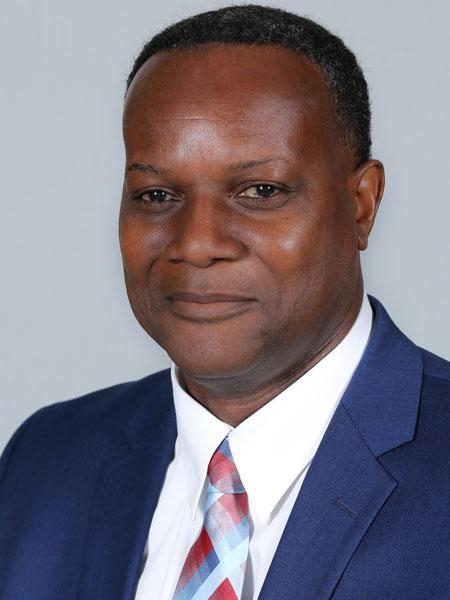
Out of all the segments of the event, my favorite one was by Dr. Reginald Blake, who according to the CUNY Remote Sensing Earth System Institute, is the interim Associate Provost and Dean of Curriculum and Research at the New York University of Technology (CityTech). He is also the Co- Director of the Center for Remote Sensing and Earth Systems Sciences (ReSESS) at CityTech. His research interests consist of satellite application and ground based remote sensing to study hydro-climate, hurricanes, and air pollution. The reason I liked Dr. Reginald Blake segment is because as someone who was clueless to climate change prior to the event, he educated me on the issue in way that my novice mind could easily digest, breaking it down at the basic level. The biggest thing I learned during his segment is that climate and weather are two different things, both things I thought were one and the same. This along with his other teachings on the greenhouse effect, were very insightful because it definitely gave me basic yet solid understanding of what this event and the campaign, I had been working on was all about and how it truly advocates for an issue in dire need of resolution.
Furthermore, as a Black man, I felt proud and inspired to witness another Black man taking center stage and demonstrating his intellect at such an important event. After having read his interview with the CUNY Remote Sensing Earth System Institute in honor of Black History Month, Dr. Reginald Blake has managed to transcend his Blackness beyond the stereotypical fields we usually are known for and thrive in, sports and entertainment. He navigates and operates in a field, in which his Black identity positions him as a minority but he does not allow that to have him “settle in mediocrity” and strive for excellence. As a Black graphic designer who aims to operate in an equally unfavorable industry to Black people, Dr. Reginald Blake to me stands as a testimony that if there’s a will then there’s a way, and this is teaching I definitely will apply in my own career path.
All in all, albeit long, I did enjoy my time at ECOFEST, learning about ways to protect and revive our planet.
Journal 11 – “Why Type” by Monotype
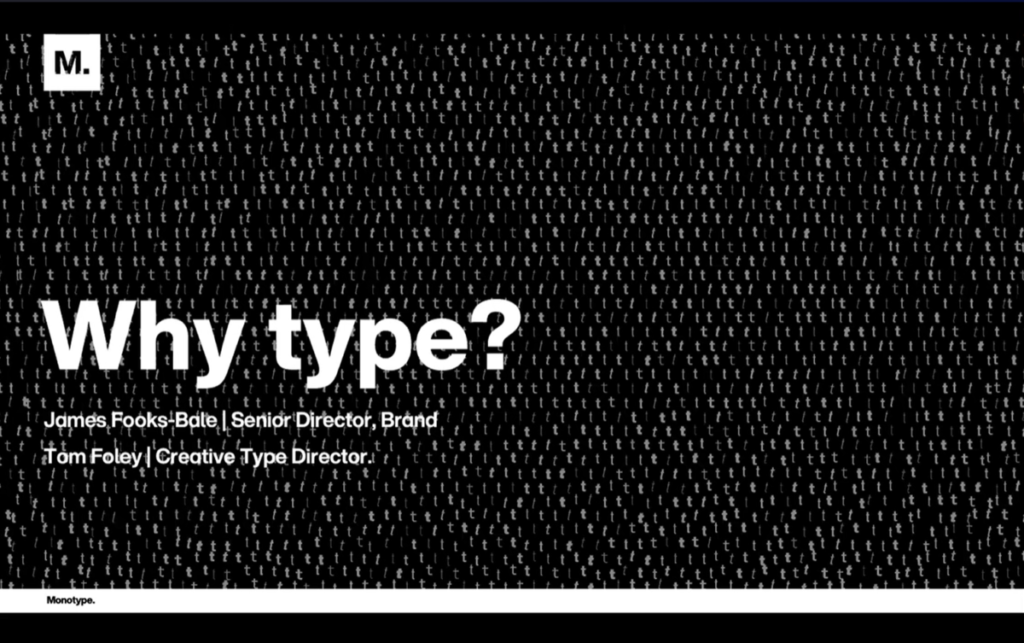
The webinar I attended was Monotype’s “Why Type” presented by James Fooks, a Senior Director and Tom Foley, a Creative Type Director. Their webinar was about the relevance and importance of type as it pertains to branding, further addressing how its crafting and execution is crucial to a brand’s identity. The biggest takeaway I got from this webinar was that type primarily serves two purposes, aesthetic, and function. It shapes a brand’s aesthetic through its distinctiveness which enhances a brand’s recognition and memorability and consequently, expands their reach. It does so by embodying enough personality and carry a voice or an emotion that can connect with the brand’s customers. The relatability factor of a type’s aesthetic is one of the utmost important because it allows for its transcendence, through cultures, orders, languages, beliefs, age, time, surfaces, technology and trends.
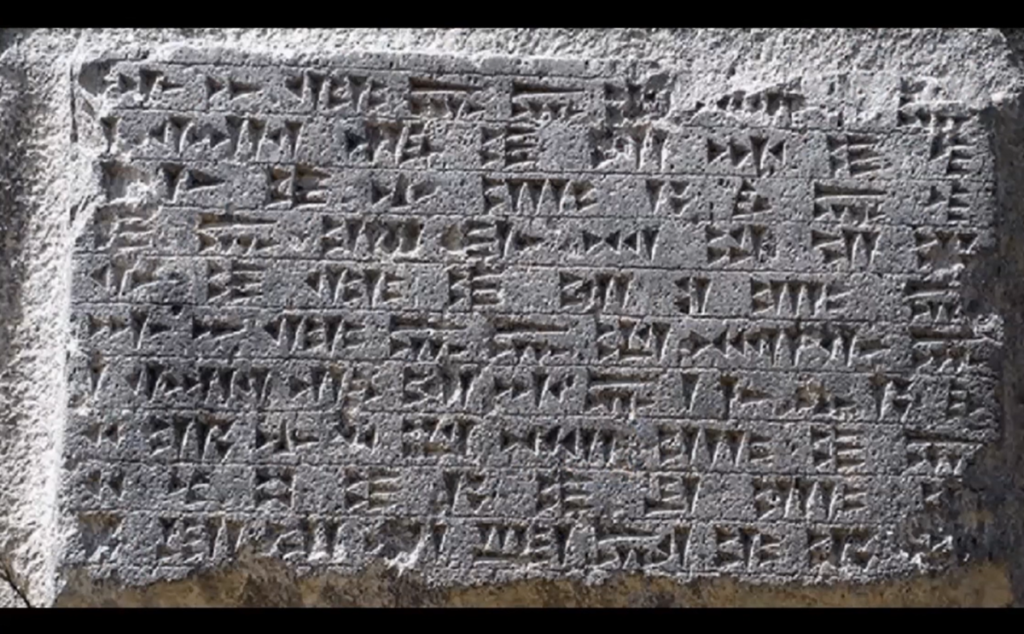
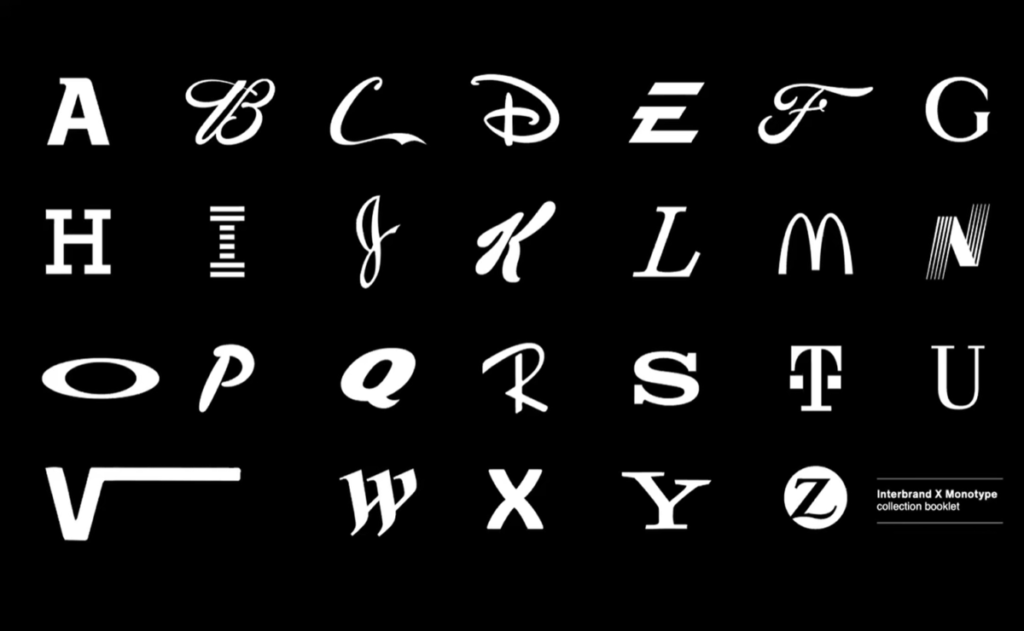
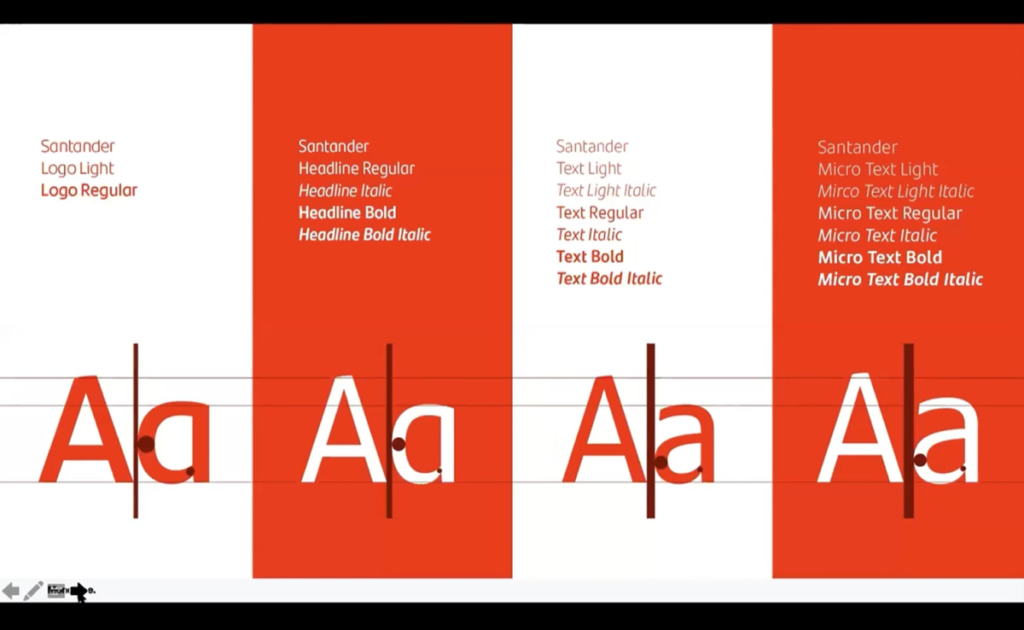
With the ever-evolving nature of brands, it is essential for type in its function to be able to adapt to the needs of the consumers regarding how it engages with the spectrum of audiences worldwide, whoever and wherever they are. A key element it achieves this is through legibility and accessibility, type must be clearly readable through any medium and on every platform it is presented, “making the cognitive burden as light and bearable as possible.” This was highlighted in the Santander project, in which they were tasked to create and design a new font family for the banking company, in order to better communicate their message to their customers
The webinar also addressed the perception of type on both a global and local scale where the presenters referenced a project they worked on for Sony, which was led by Kira Kobayashi. The project highlighted the transcendental aspect of type and how it allows for inclusivity through its transcending and transferring of personality and meaning across cultures. Another client for whom this was essential to was Chinese technology and entertainment company, Tencent, who aimed to extend their brand from their native Far East to the West.
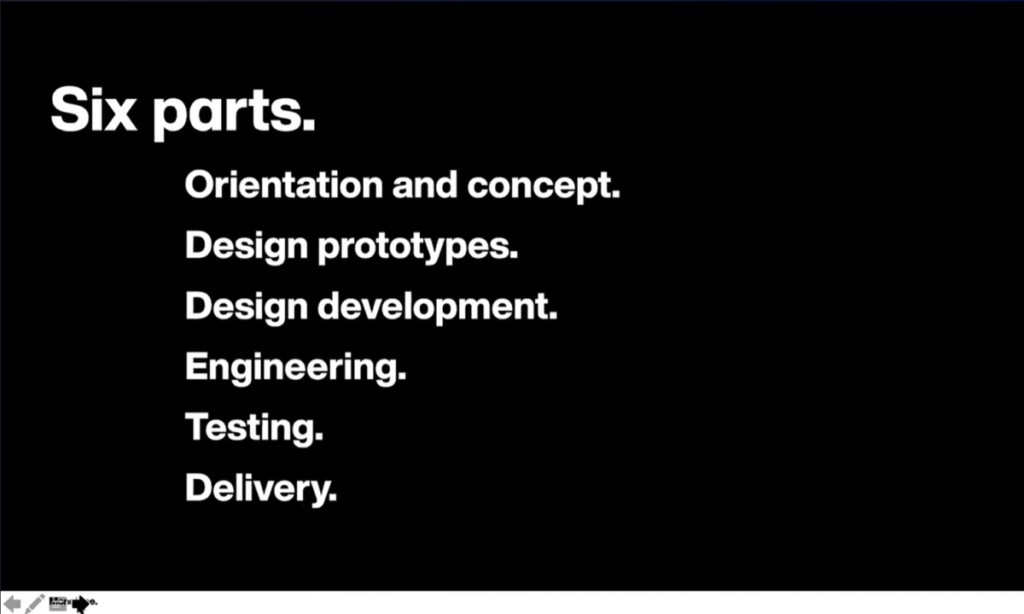
As a graphic designer, I profoundly related to the teaching of Fooks and Foley, because type has slowly become one of my favorite design components to work. With my work predominantly focusing on corporate branding, I have a deep understanding of how much a major element type is to the success of a company. As highlighted in the webinar, “good type improves experience which consequently enhances customer loyalty and therefore creates revenue. Also I particularly related to the arduous of finding and researching the best fitting for a project and the numerous test trials and prototyping when developing and engineering a type.



